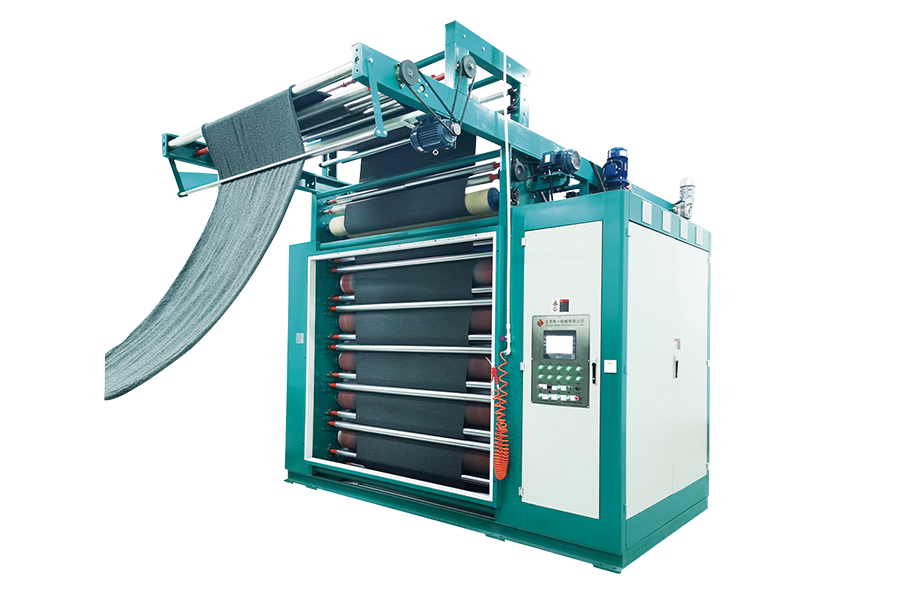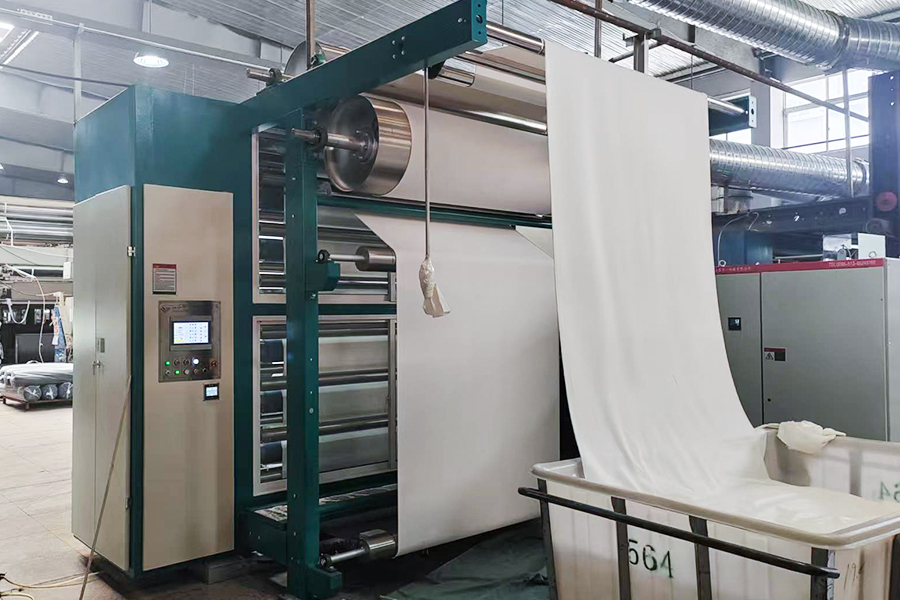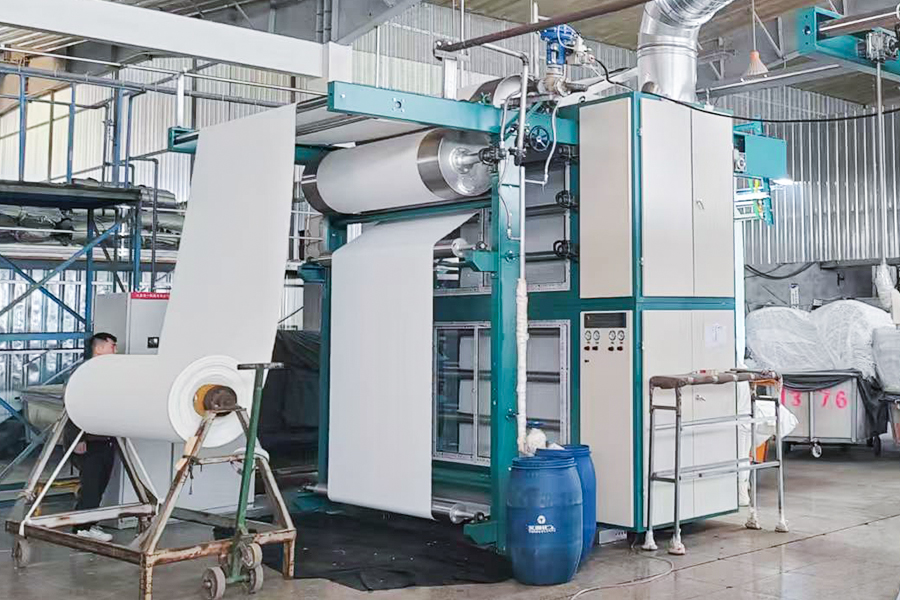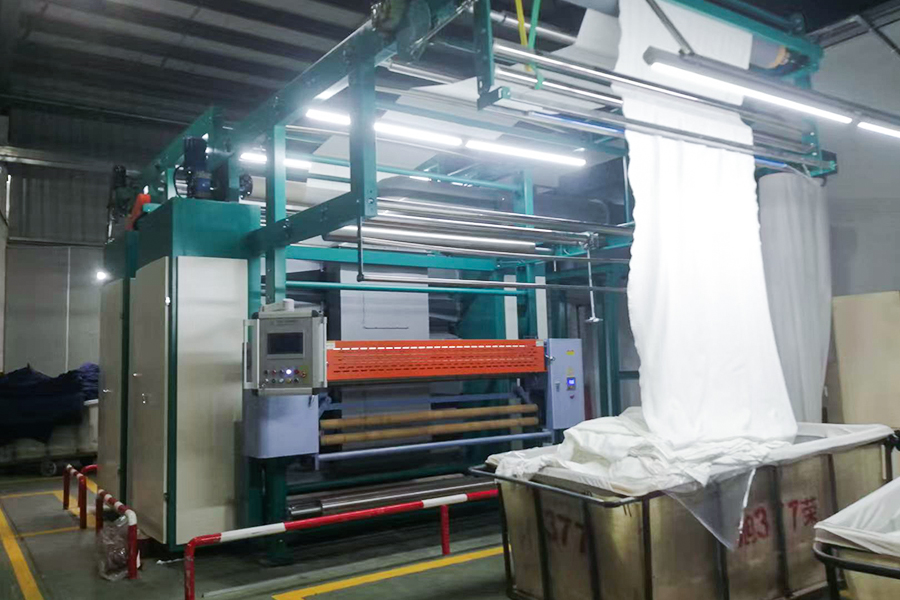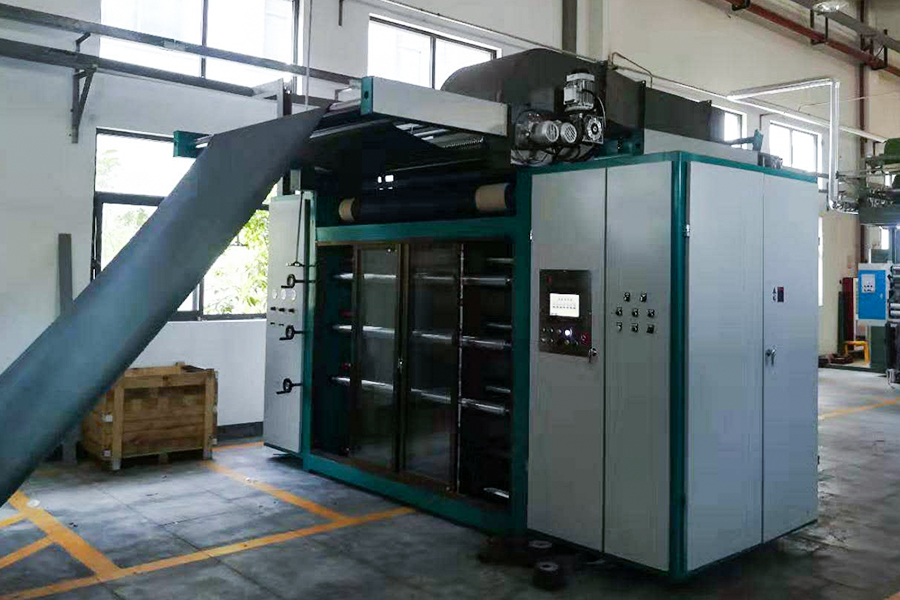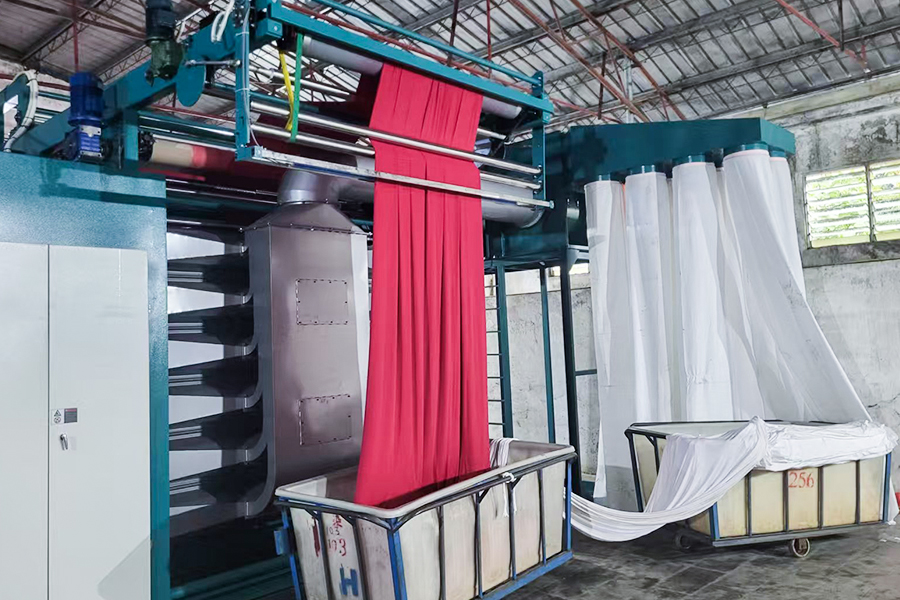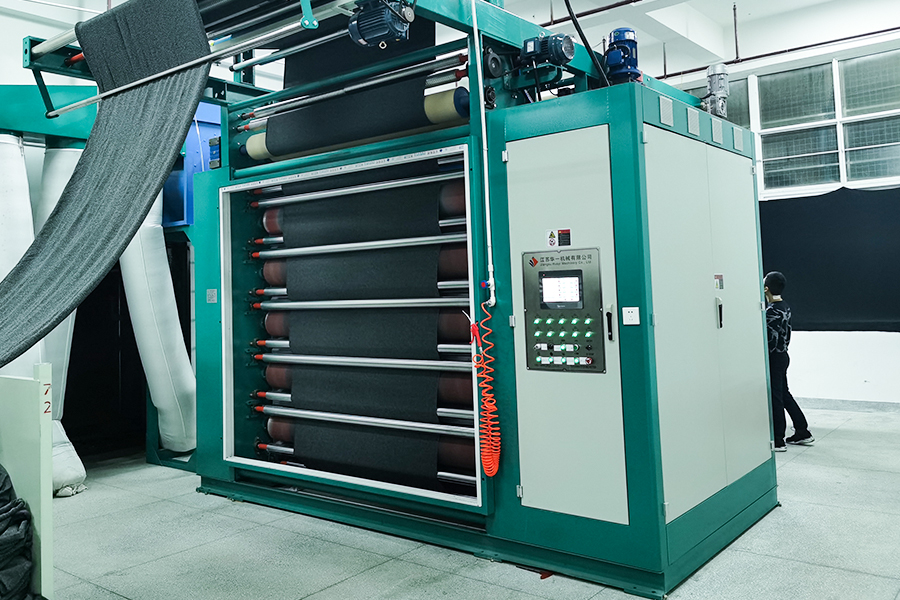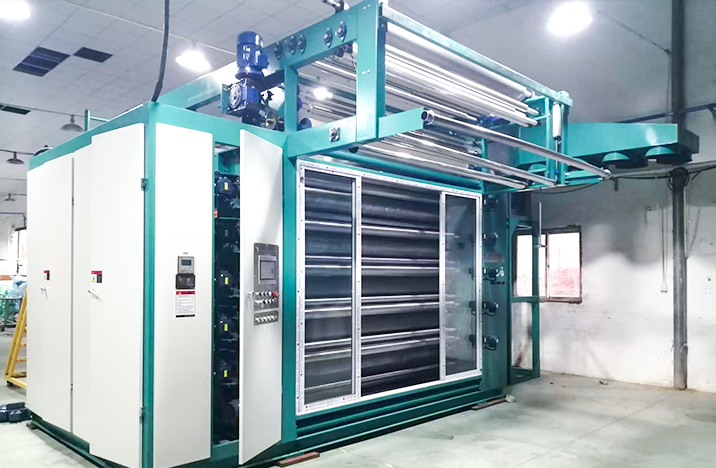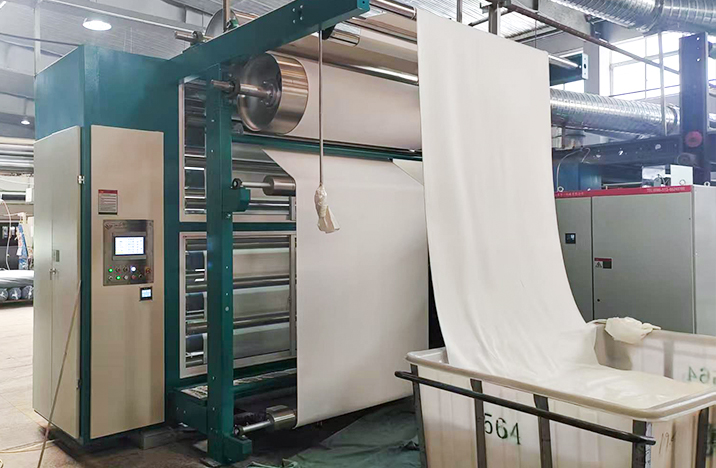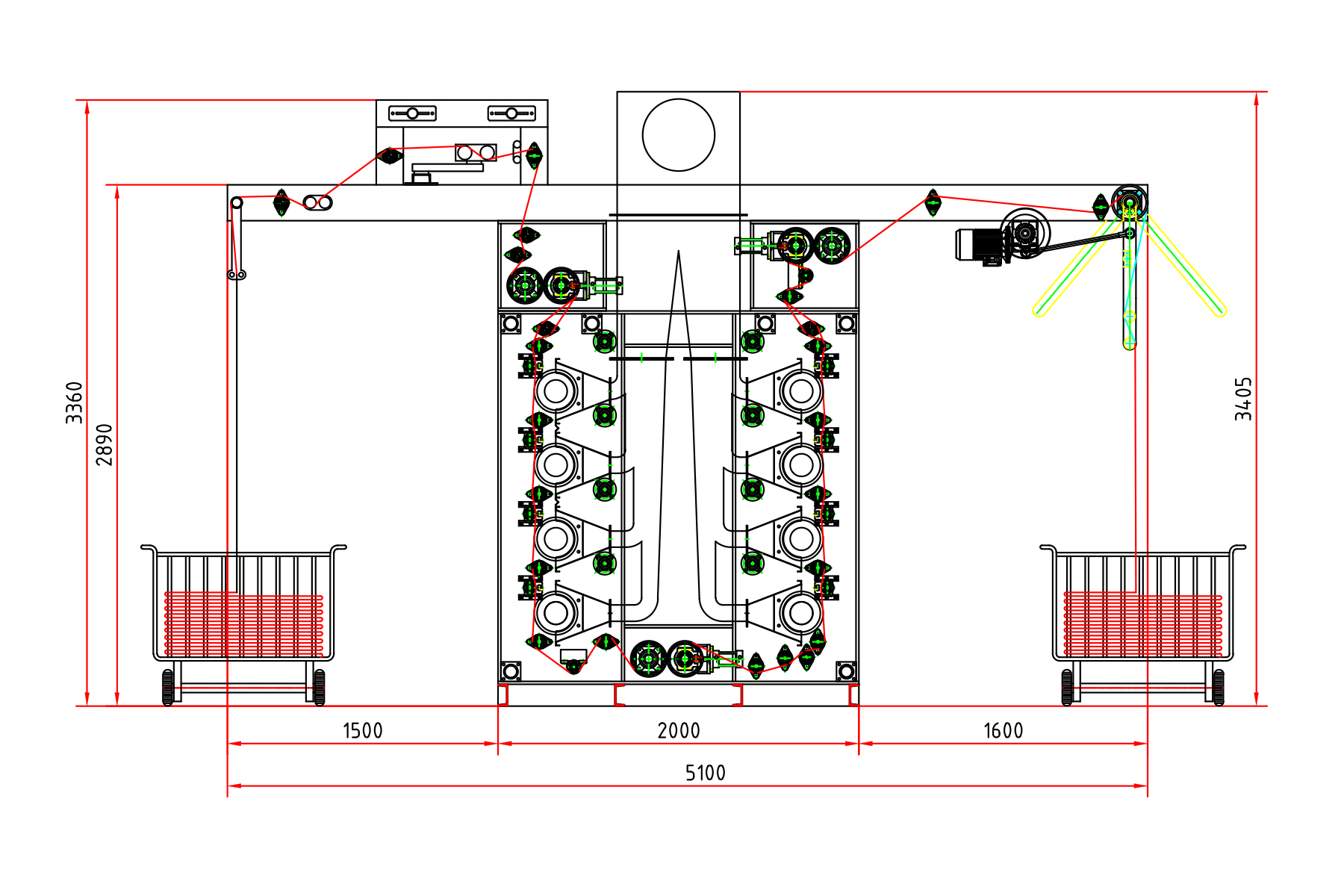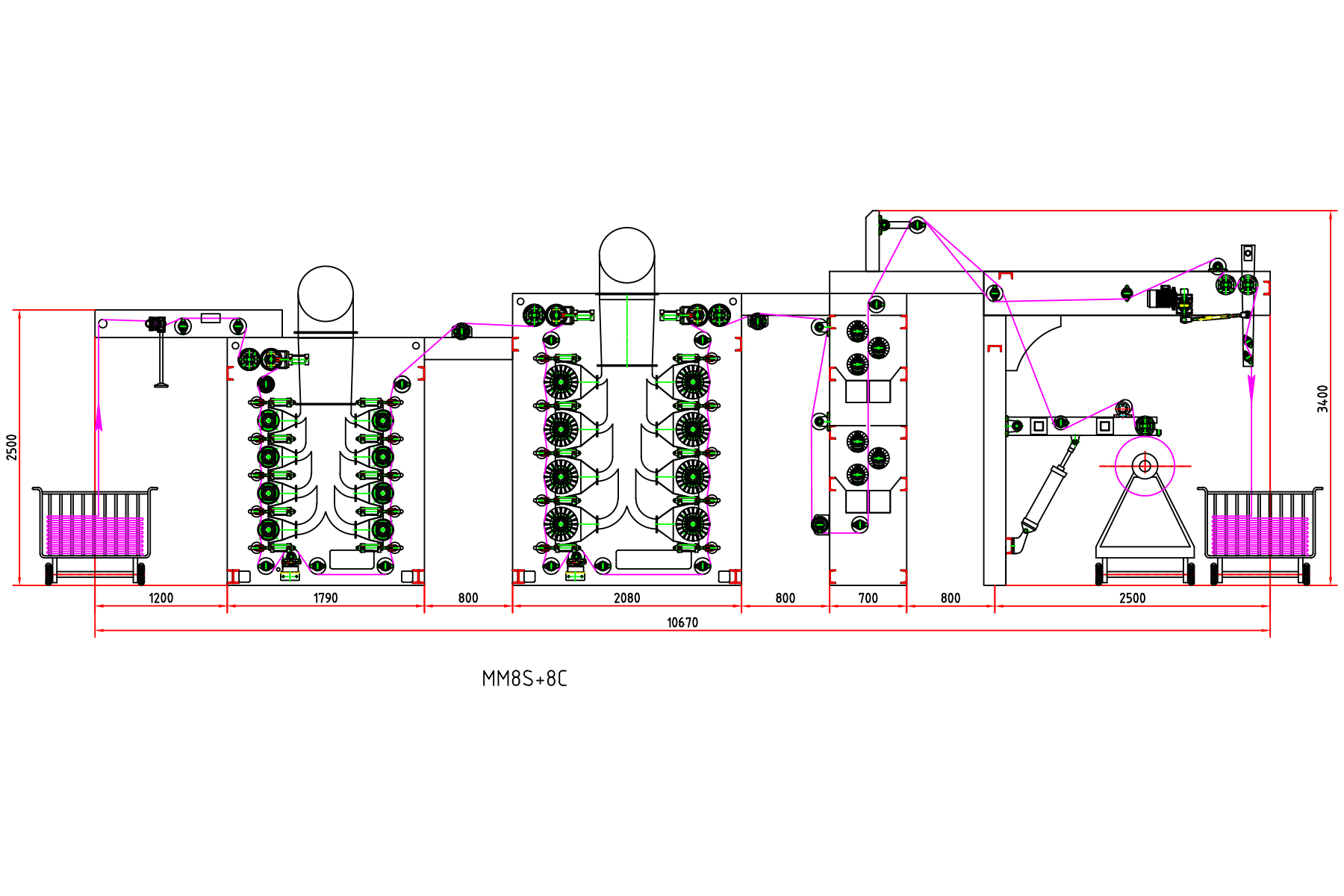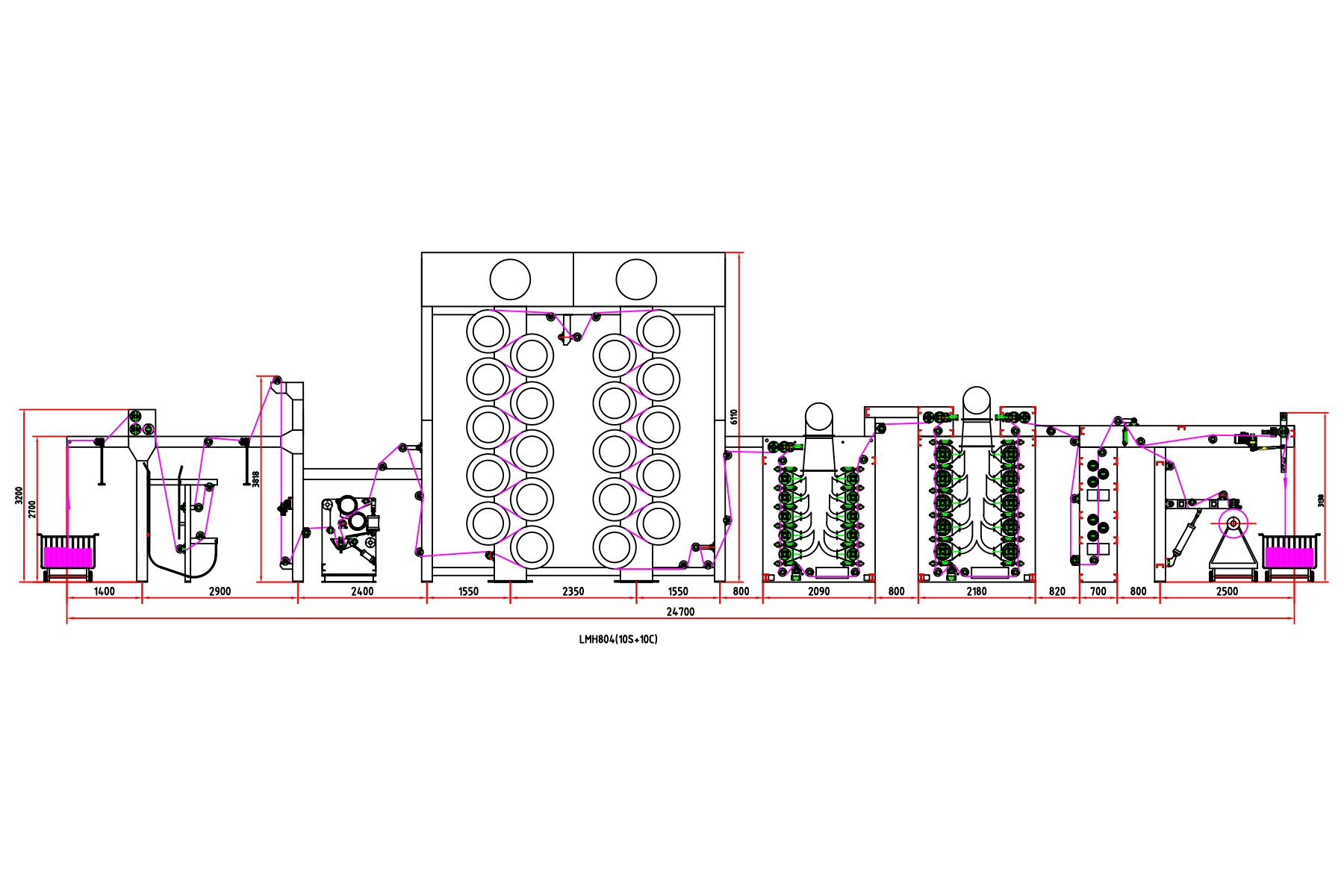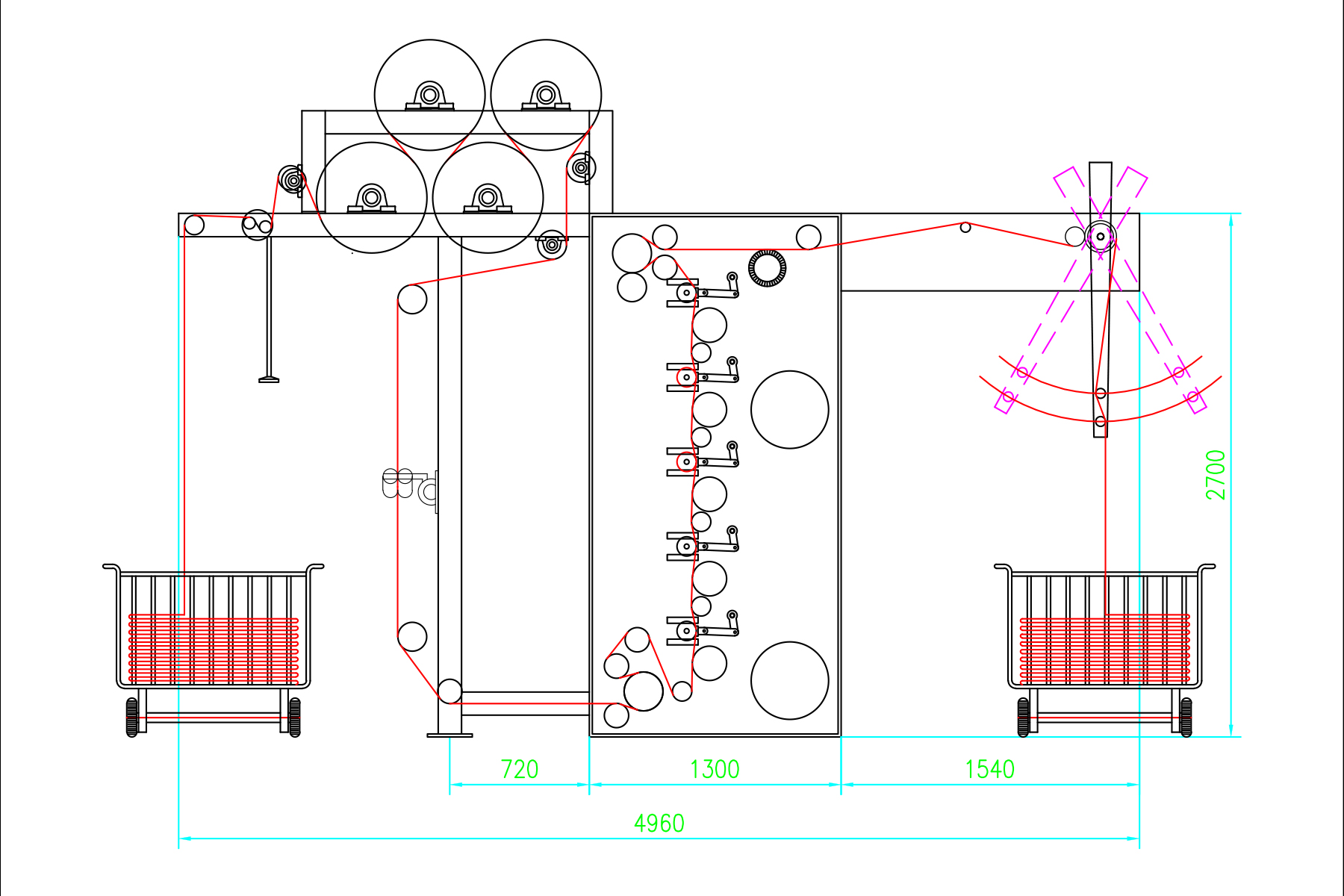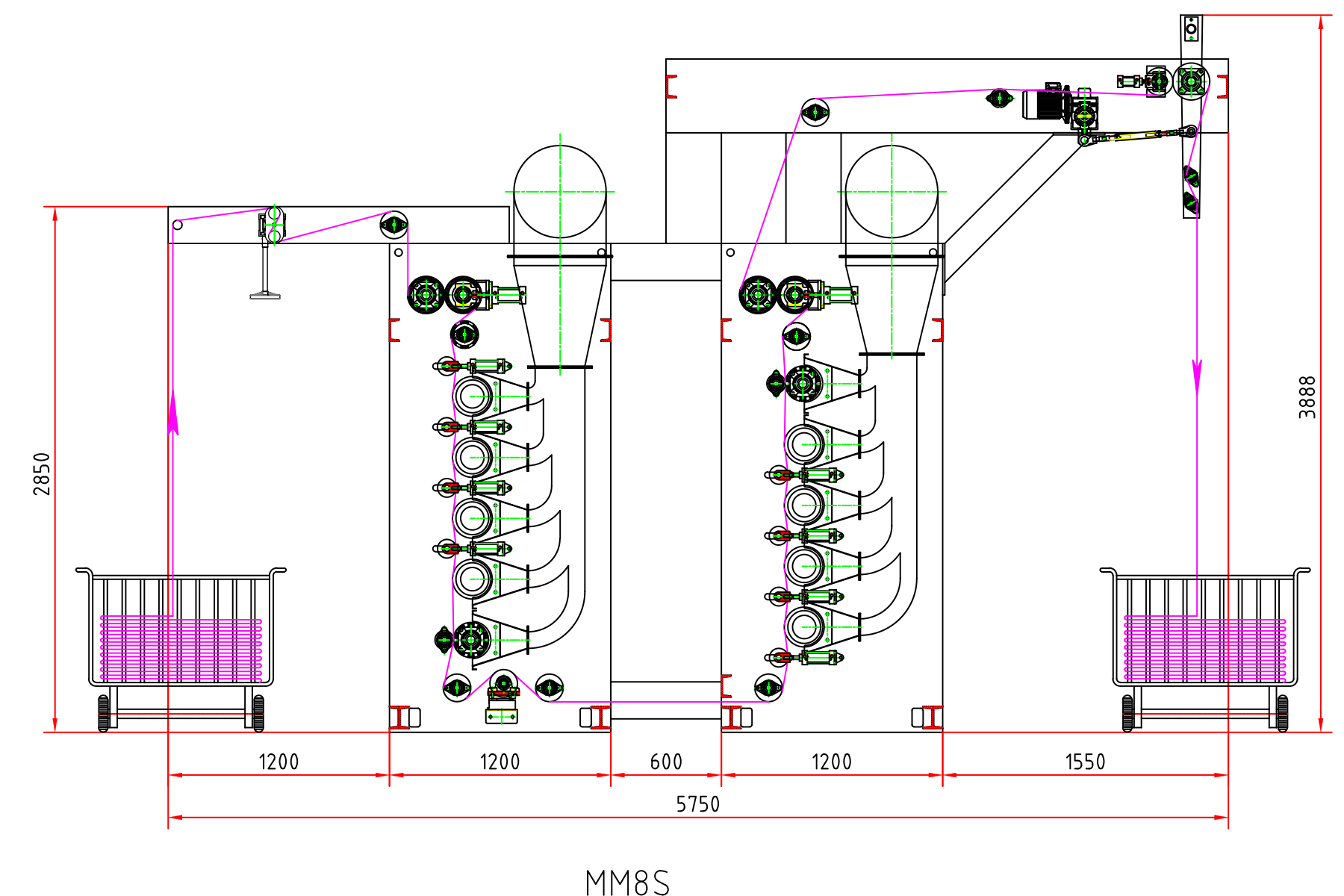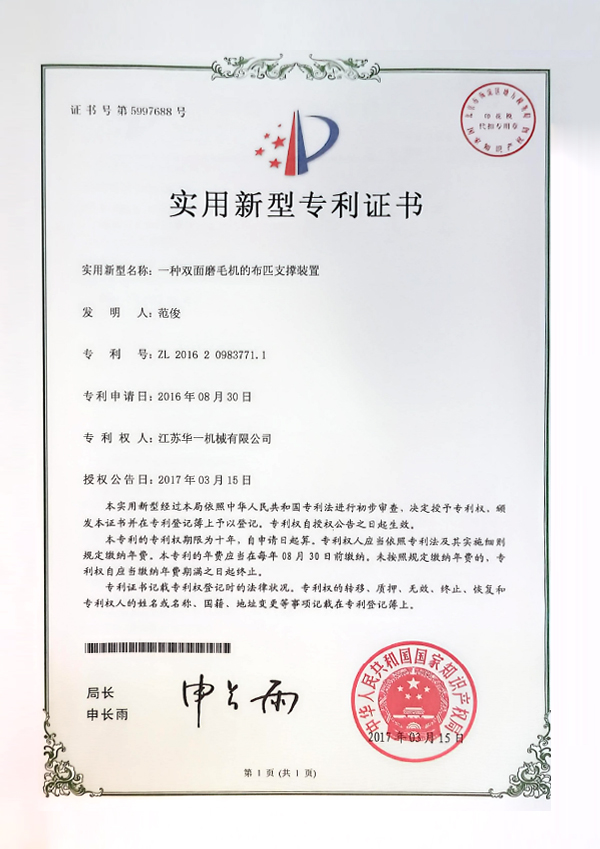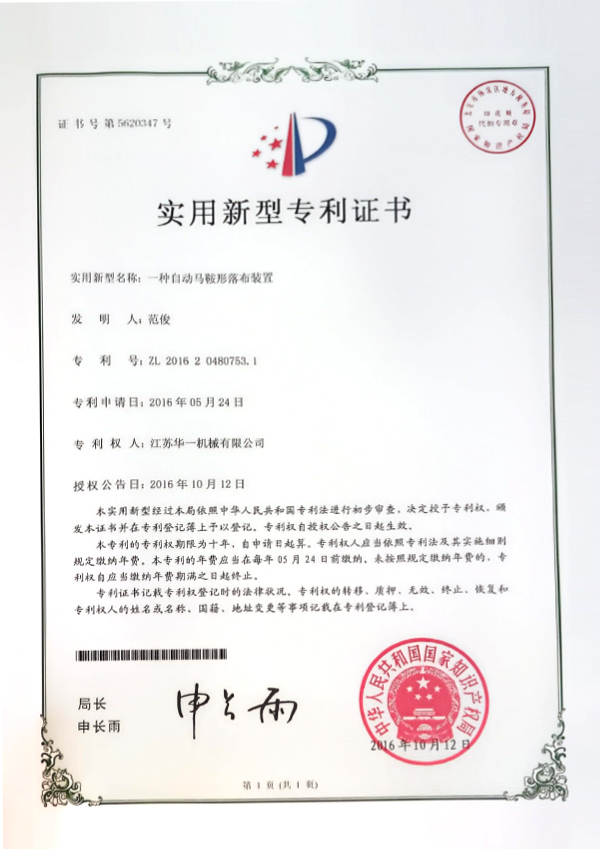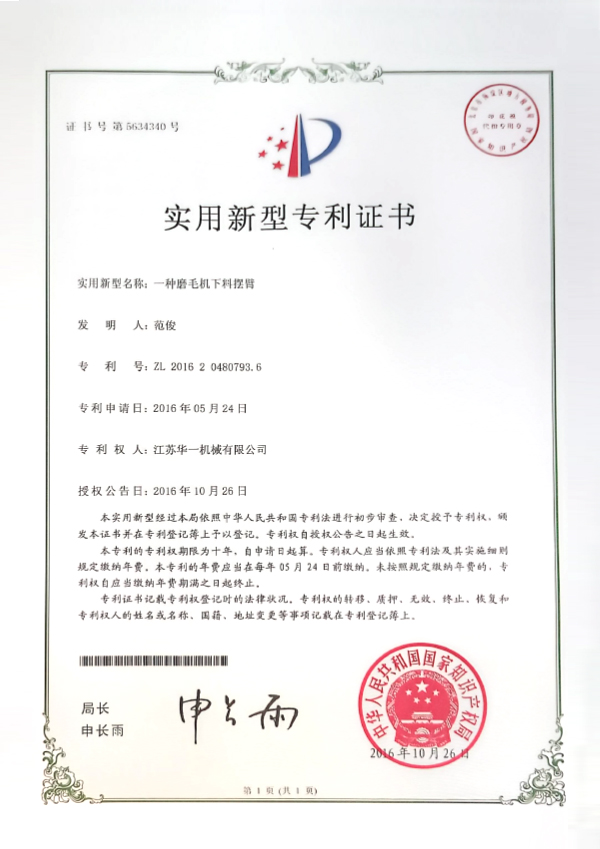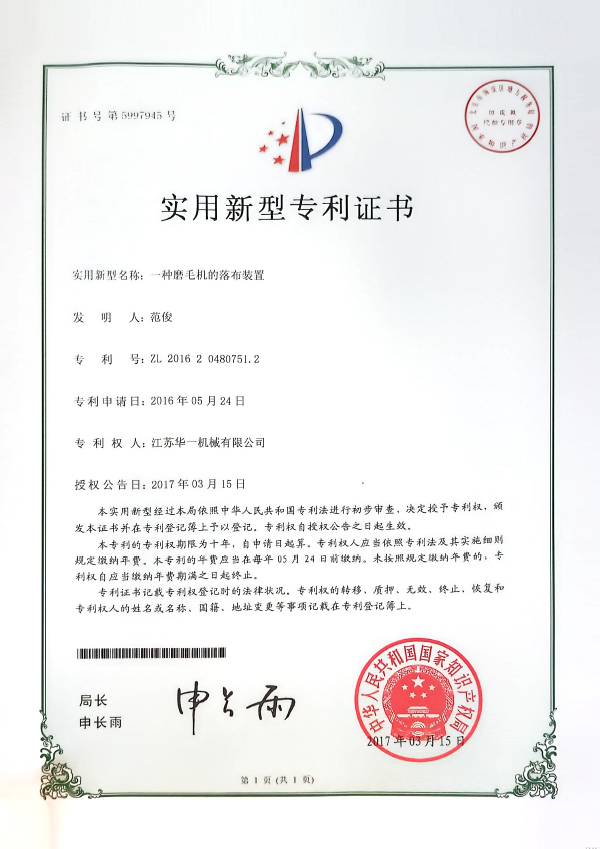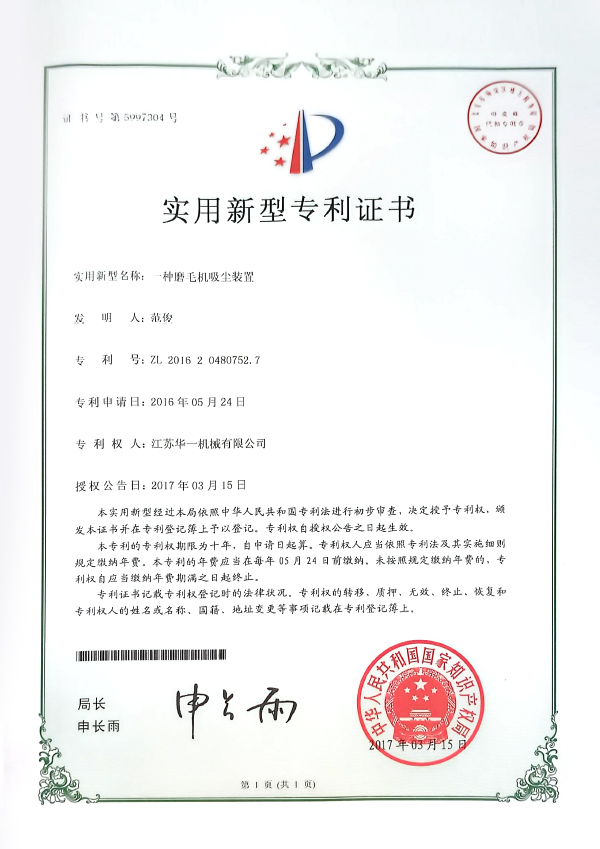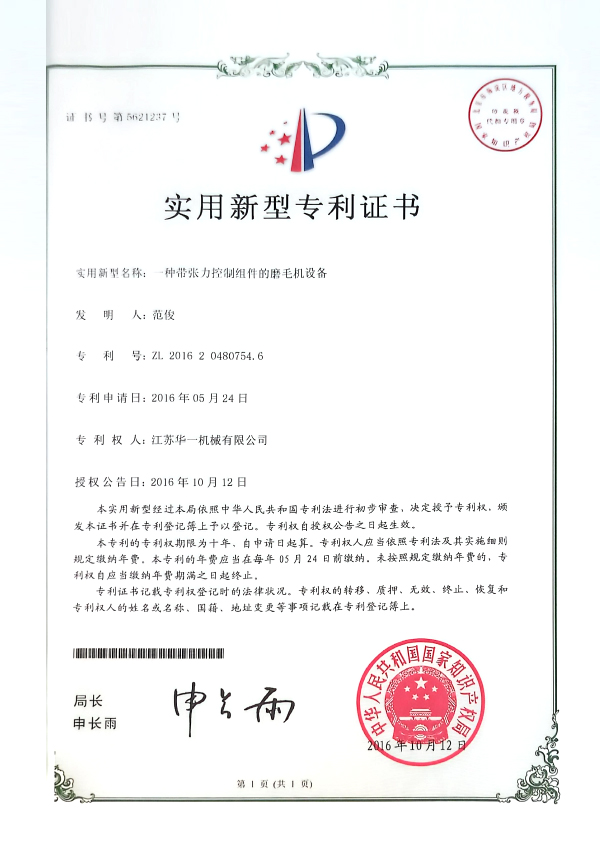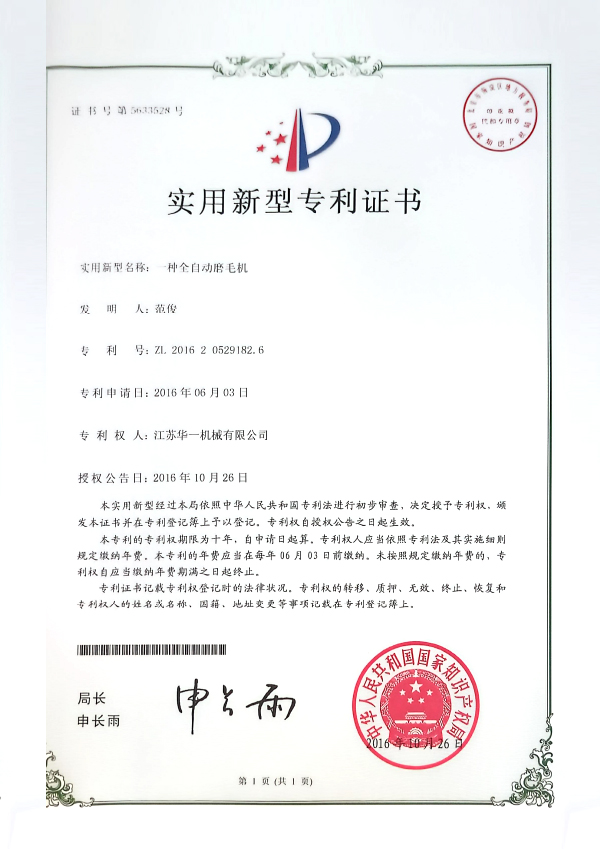Why does the "multiple abrasive combinations" make the Vertical Combined Sueding Machine MM-Model more flexible?
In modern textile processing, the demands for suede finishes on various fabrics are highly diverse. This is especially true in market segments such as home textiles, apparel, and functional fabrics. "Suede style" and "surface feel" often determine a product's quality and added value. The Vertical Combined Sueding Machine MM-Model addresses this trend with technological innovations. By supporting multiple abrasive combinations, it significantly enhances the machine's flexibility and market adaptability.
The three abrasives each have their own advantages, covering a wide range of fabric types:
The Sandpaper Roller is suitable for primary sanding of general fabrics (such as conventional cotton and polyester). Its strong grinding force and fast onset of action allow it to quickly create a basic suede texture, making it an ideal choice for high-volume, basic processing.
The Carbon Fiber Roller, with its high softness and uniformity, is particularly suitable for fine sanding of mid- to high-end knitted fabrics or blended fabrics. After processing, the fabric surface has a more natural and smooth velvety feel, making it widely used in products requiring an enhanced tactile feel, such as intimate apparel and home furnishings.
The ceramic fiber roller boasts exceptional hardness and fine control, making it suitable for applying a "high-end polishing"-style velvet treatment to high-density, premium fabrics like corduroy and woolen cloth, creating a unique, premium peach-skin effect that meets the processing requirements of high-end apparel and luxury goods.
Dynamic combination and switching improves processing efficiency:
The Vertical Combined Sueding Machine MM-Model's abrasive combination not only supports fixed single-material operation but also flexible combinations such as multi-roller linkage and sequential sanding. Abrasive types can be quickly switched during batch production or mixed-product operations, significantly reducing machine adjustment costs and manual operation time. This is particularly important when handling small-batch, diverse orders, effectively improving the equipment's output per unit time.
Innovative integration derived from two decades of technological accumulation:
This flexible modular design is backed by two decades of technological accumulation and industry experience of Jiangsu Huayi Machinery Co., Ltd. From temperature control, roll pressure coordination, and tension adjustment in the sanding process to the synchronized drive and automated systems for equipment operation, the company's deep manufacturing expertise is evident. This enables the Vertical Combined Sueding Machine MM-Model to meet both traditional fabric sanding needs and high-end customized orders, making it a sanding equipment platform that balances versatility and expertise.
How do stable tension and lateral motion control improve finished product consistency?
In high-end sanding processing, product consistency is a key customer concern. The Vertical Combined Sueding Machine MM-Model utilizes a precise tension control system and a lateral oscillation mechanism to dynamically control the fabric's running state, significantly improving sanding consistency and product yield.
Intelligent Tension Control System: During the sanding process, variations in fabric structure and weight often lead to tension fluctuations between different fabric types (such as stretch knits and heavy blends), impacting process quality. The Vertical Combined Sueding Machine MM-Model is equipped with an advanced intelligent tension control system. Using a built-in tension sensor, the system monitors the fabric's tension in real time and provides instant feedback to the main control system, ensuring rapid response and precise adjustment. The system automatically adjusts the fabric guide or tension arm to maintain the ideal fabric tension range, avoiding stretching deformation caused by excessive tension or wrinkles and loose areas caused by insufficient tension. This function effectively improves sanding uniformity and surface finish, and is a key technical support for ensuring high-quality sanding results.
Transverse Oscillation Control System: Sanding uniformity depends not only on the stability of the longitudinal fabric feed but also on the precision of the roller's transverse oscillation across the fabric. The Vertical Combined Sueding Machine MM-Model is equipped with a high-performance, electronically controlled transverse oscillation system, enabling precise control of the roller's oscillation angle and frequency. The system supports multi-angle adjustment, allowing flexible left and right oscillation ranges based on fabric width, ensuring consistent napping results at the edges, center, and sides. Furthermore, the system boasts high-frequency dynamic response, automatically adjusting the oscillation frequency based on real-time fabric speed to meet sanding requirements at varying production speeds. Continuous and uniform transverse movement effectively prevents the roller from remaining in a fixed area for extended periods, preventing localized "shine," mottling, or wear marks, ensuring a smooth, soft, and consistent surface overall.
Process Consistency: Thanks to Jiangsu Huayi Machinery Co., Ltd.'s in-depth optimization of process parameter reproducibility and operational stability during equipment development, the Vertical Combined Sueding Machine MM-Model is capable of maintaining highly consistent sanding results across multiple shifts and batches. Upon startup, the machine quickly reaches the set tension and swing rhythm, eliminating the need for lengthy adjustments and fabric trials. This significantly shortens the machine's setup cycle and improves production efficiency. Even during operator rotations, fabric type changes, or order changes, the Vertical Combined Sueding Machine MM-Model accurately maintains the desired sanding depth and surface consistency, significantly reducing process variations caused by human intervention. Furthermore, the machine supports pre-setting and rapid switching of multiple process parameters, flexibly responding to diverse order requirements and achieving truly efficient and stable flexible production.
A rational structural design and multi-link combination enhance flexibility and efficiency.
The core design of the Vertical Combined Sueding Machine MM-Model is the technical insights and precise understanding of customer needs accumulated by Jiangsu Huayi Machinery Co., Ltd. through its long-term commitment to textile equipment manufacturing. This machine features a modular, compact layout, significantly reducing its overall footprint while maintaining a full range of functional configurations. This makes it particularly suitable for production workshops with tight spaces or those requiring high-density equipment layouts, offering greater flexibility for optimizing production line layouts.
Even more innovatively, the Vertical Combined Sueding Machine MM-Model incorporates a multi-link mechanism, enabling the coordinated operation of different sanding process modules. Users can flexibly configure single-sided sanding, double-sided sanding modules, and ultra-high-speed sanding rollers, switching between these combinations based on fabric type, order type, and production capacity requirements:
Single-sided sanding mode: Suitable for lightweight fabrics or fabrics that don't require double-sided sanding, such as summer bedding or some garment linings. This reduces energy consumption and unnecessary fabric loss.
Double-sided sanding mode: Provides highly consistent processing for medium-heavy fabrics that require both front and back sanding, such as winter home textiles, flannel, and brushed fabrics, effectively enhancing the overall texture of the fabric.
Ultra-high-speed sanding roller configuration: Designed for high-volume, fast-delivery factories, this configuration enhances the machine's processing capacity per unit time and is particularly suitable for centralized processing of large-volume orders.
This modular design not only expands the equipment's application range but also significantly improves production flexibility and efficiency. Companies can flexibly adjust equipment configurations based on production plans, eliminating the need for frequent machine replacements and significantly reducing downtime and switching costs. This concept stems from Huayi Machinery's in-depth research into the real-world challenges faced by textile factories of varying sizes in the face of the "rapid response, high-variety, small-batch" trend. Through structural innovation, Huayi Machinery has achieved a significant improvement in equipment adaptability, making the Vertical Combined Sueding Machine MM-Model a crucial tool for upgrading textile sanding automation today.

 简体中文
简体中文 English
English عربى
عربى